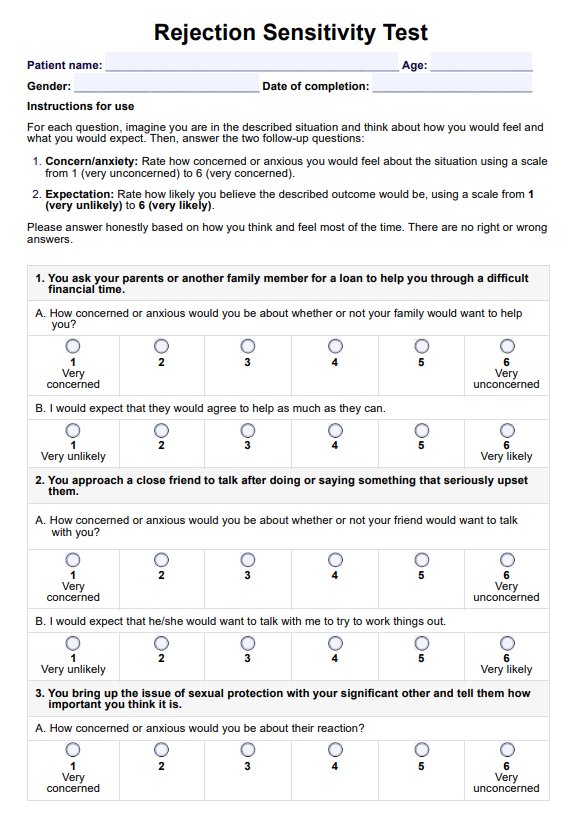Yes, rejection sensitive dysphoria (RSD) can occur in individuals without ADHD.

Rejection Sensitivity Test
Discover your sensitivity to rejection with our free test. Gain insights into your emotional responses and learn ways to enhance your well-being.
Use Template
Rejection Sensitivity Test Template
Commonly asked questions
Anxiety involves general worry or fear, while RSD is an intense emotional response specifically to perceived rejection or criticism.
Feeling overwhelming sadness and self-doubt after a friend cancels plans, perceiving it as personal rejection.
EHR and practice management software
Get started for free
*No credit card required
Free
$0/usd
Unlimited clients
Telehealth
1GB of storage
Client portal text
Automated billing and online payments











